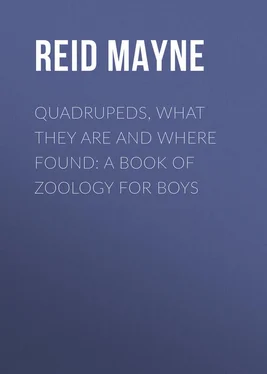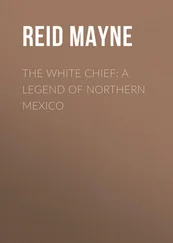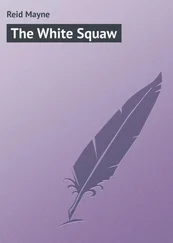Mayne Reid - Quadrupeds, What They Are and Where Found - A Book of Zoology for Boys
Здесь есть возможность читать онлайн «Mayne Reid - Quadrupeds, What They Are and Where Found - A Book of Zoology for Boys» — ознакомительный отрывок электронной книги совершенно бесплатно, а после прочтения отрывка купить полную версию. В некоторых случаях можно слушать аудио, скачать через торрент в формате fb2 и присутствует краткое содержание. Жанр: literature_19, foreign_antique, foreign_prose, на английском языке. Описание произведения, (предисловие) а так же отзывы посетителей доступны на портале библиотеки ЛибКат.
- Название:Quadrupeds, What They Are and Where Found: A Book of Zoology for Boys
- Автор:
- Жанр:
- Год:неизвестен
- ISBN:нет данных
- Рейтинг книги:5 / 5. Голосов: 1
-
Избранное:Добавить в избранное
- Отзывы:
-
Ваша оценка:
- 100
- 1
- 2
- 3
- 4
- 5
Quadrupeds, What They Are and Where Found: A Book of Zoology for Boys: краткое содержание, описание и аннотация
Предлагаем к чтению аннотацию, описание, краткое содержание или предисловие (зависит от того, что написал сам автор книги «Quadrupeds, What They Are and Where Found: A Book of Zoology for Boys»). Если вы не нашли необходимую информацию о книге — напишите в комментариях, мы постараемся отыскать её.
Quadrupeds, What They Are and Where Found: A Book of Zoology for Boys — читать онлайн ознакомительный отрывок
Ниже представлен текст книги, разбитый по страницам. Система сохранения места последней прочитанной страницы, позволяет с удобством читать онлайн бесплатно книгу «Quadrupeds, What They Are and Where Found: A Book of Zoology for Boys», без необходимости каждый раз заново искать на чём Вы остановились. Поставьте закладку, и сможете в любой момент перейти на страницу, на которой закончили чтение.
Интервал:
Закладка:
The Grey otter is a South African animal, and in India we have the Wargul; while in the rivers of Nepaul – a country so rich in mammalia – there is the Golden brown otter. China, in common with other Indo-Chinese countries, possesses the Chinese otter; and South America has the Brazilian Contra, and in all probability several other species.
With regard to the Civet-Weasels – or Civet Cats, as they are commonly called – there is a still greater variety, both in genera and species: so many, indeed, that, as already stated, they have been arranged in a family by themselves. They may be regarded, however, as large weasels, distinguished from the others by their having a sort of pouch or gland under the tail, in which is secreted an unctuous and highly odorous substance. This, in some species, as in the true civets, is relished as a perfume or scent, while in others it is an extremely disagreeable odour. The true civet is a native of North Africa; where it is kept in a tame state, for the purpose of obtaining from it the well-known perfume of commerce. An allied species, the Rasse, belongs to Java – and is there also kept in cages for the same purpose – while in Asia – from Arabia to Malabar, and among the Malays and Arabs of Borneo, Macassar, and other islands of the Indian Archipelago – still another species of civet affords a similar perfumed substance.
The Aard Wolf (earth wolf) of South Africa is usually classed among the civets, but with very slight reason. It is far more like the hyena; and is certainly nothing else than a hyena.
The Delundung of Java is a creature that bears a resemblance to the civets; and may be regarded as forming a link between these and the true cats.
The Genets constitute a division of the civet-weasel tribe; and one of which there are numerous species. They are usually pretty spotted creatures, with immensely long tails; and but for their cruel and sanguinary habits would, no doubt, be favourites. They exist in South Europe; and, under different forms and appellations, extend over all Africa to Madagascar and the Cape – as well as through the countries of Southern Asia and the Asiatic islands.
The Ichneumons claim our attention next. These are celebrated animals, on account of the strange and fabulous tales related of the species known as the Egyptian ichneumon, which, among the people of Egypt, is domesticated, and was once held as a sacred animal. Besides the Egyptian ichneumon, there are several other species in Africa – one belonging to Abyssinia, and no less than six to the countries near the Cape. The Garangan of Java is an ichneumon; and so also are the Mongoos and Nyula of Nepaul; while in the Malay peninsula is a species known as the Malacca ichneumon. The Paradoxure is usually classed with the civets, though it wants the perfumed pouch; and the Suricate or Meer-cat, of the Cape colonists, takes its station in this group. A badger-like animal of Madagascar, the Mangu, is also regarded as a civet: so, too, are the Coatis of the New World, though these last are evidently of much nearer kin to the badgers.
Perhaps the curious creature known as the Potto, or Kinkajou, has more pretensions to a place among the civets: at all events, it deserves one in the general group of the weasels.
Chapter Six.
Tame Dogs
Perhaps of all other animals the dog has been the earliest and most constant companion of man. His swiftness and strength, but more especially his highly-developed power of smelling, have made him a powerful ally against the other animals; and these qualities must have attracted the attention of man at an early period – particularly in those times when the chase was, perhaps, the only pursuit of mankind.
No animal is more widely distributed over the earth. He has followed man everywhere; and wherever human society exists, there this constant and faithful attendant may be found – devoted to his master, adopting his manners, distinguishing and defending his property, and remaining attached to him even after death.
It is a question among naturalists as to what was the parent stock of the dog. Some allege that he has sprung from the wolf; others that he is a descendant of the jackal; while not a few believe that there were true wild dogs, from which the present domesticated race had their origin. These ideas are mere speculations, and not very reasonable ones either. It would not be difficult to show, that different kinds of dogs have sprung from different kinds of animals – that is, animals of the same great family – from wolves, foxes, jackals, zerdas, and even hyenas. This can be proved from the fact, that domesticated breeds among savage tribes, both in Asia and America, are undoubtedly the descendants of wolves and jackals: such, for instance, as the Esquimaux dog of the Arctic regions, the Dingo of Australia, the Indian dogs of North America – of which there are several varieties – and also one or two kinds existing in Mexico and South America.
Naturalists deny that there are any true dogs living in a wild state. This is simply an unreasonable assertion. Wild dogs of several species are to be met with in Asia and America; and if it be asserted that these originally came from a domesticated stock, the same cannot be said of the hunting dog of Southern Africa – which is neither more nor less than a wild hound .
Perhaps none of the animals that have submitted to the conquest of man have branched off into a greater number of varieties than this one. There are more kinds than either of horses or oxen. We shall not, therefore, attempt a description of each; but limit ourselves to speak of those breeds that are the most remarkable – or rather those with which the reader is supposed to be least familiar. To describe such varieties as the spaniel, the greyhound, the mastiff, or the terrier, would not add much to the knowledge which the English reader already possesses.
One of the most remarkable of dogs is the huge mastiff of Tibet. He is long-haired, and usually of a jet black colour. He is quite a match in size for either the Newfoundland or San Bernard breeds, and not unlike one or the other – for it may be remarked, that these in many points resemble each other.
The Tibet dog, as his name implies, is the property of the Tibetians: especially the Bhootees – the same people who own that curious species of cattle, the Yäk , or grunting ox, and who reside on the northern slopes of the Himalaya mountains. It may be inferred, therefore, that the Tibet dog affects a cold climate; and such is in reality the case. He cannot bear heat; and does not thrive, even in the kingdom of Nepaul. Attempts to introduce the breed into England have resulted in failure: the animals brought hither having died shortly after their arrival.
The masters of these dogs – the Bhootees, or Bhoteas, are a singular race, of a ruddy copper colour, rather short in stature, but of excellent disposition. Their clothing consists of furs and woollen cloths, adapted to the cold climate which they inhabit. The men till the ground, and keep yäks and sheep, and sometimes come down into the warm plains to trade – penetrating even to Calcutta. The women remain at home, their only protectors being these great dogs, who watch faithfully over their villages and encampments, and fly fiercely at any stranger who may approach them. It is said that they are especially hostile to people who have a white face; but this disposition is also characteristic of the dogs belonging to the American Indians – and perhaps those possessed by all savages with a coloured skin.
The Dingo, or dog of Australia, is an animal domesticated among the aborigines of that country. He is a dog of wolf-like shape, who does not bark, but utters only a mournful howling. He is used by the wretched natives both for the chase and as an article of food; and is a fierce and voracious creature – not hesitating to launch himself on the larger kinds of animals. He is especially employed in hunting the kangaroo; and sometimes terrible combats occur between the dingo and the larger species of kangaroos – resulting always in the death of the latter.
Читать дальшеИнтервал:
Закладка:
Похожие книги на «Quadrupeds, What They Are and Where Found: A Book of Zoology for Boys»
Представляем Вашему вниманию похожие книги на «Quadrupeds, What They Are and Where Found: A Book of Zoology for Boys» списком для выбора. Мы отобрали схожую по названию и смыслу литературу в надежде предоставить читателям больше вариантов отыскать новые, интересные, ещё непрочитанные произведения.
Обсуждение, отзывы о книге «Quadrupeds, What They Are and Where Found: A Book of Zoology for Boys» и просто собственные мнения читателей. Оставьте ваши комментарии, напишите, что Вы думаете о произведении, его смысле или главных героях. Укажите что конкретно понравилось, а что нет, и почему Вы так считаете.












